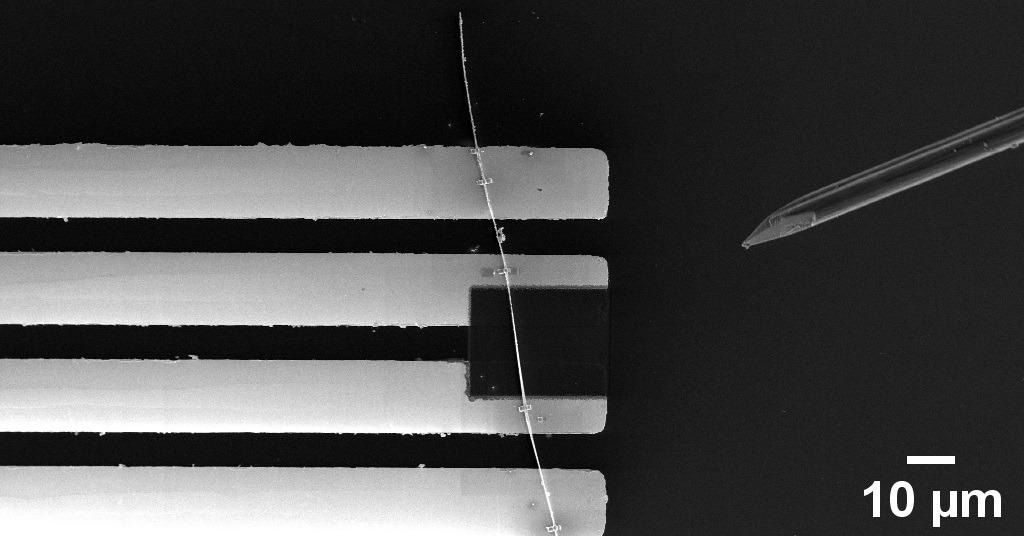May 26 2021
Researchers from the University of Surrey believe that tin-based gas sensors could help track and control harmful nitrogen (NO2) gases that pollute our planet.

Image Credit: University of Surrey
In a paper published by the Physical Chemistry Chemical Physics (PCCP) journal, researchers from Surrey, in collaboration with colleagues from São Paulo State University (UNESP), Brazil, detail how gas sensor devices can play an important role in the fight against climate change by monitoring emission sources such as nitrogenous gasses.
The research team used different combinations of the tin oxide system and constructed two device groups: devices containing a single structure nanofabricated in a Dual Beam Microscope; and a number of them in a “carpet” mode. The two devices configuration allowed the researchers to estimate the materials depletion layer (Debye length), and to propose gas-solid interaction mechanisms between the NO2 and the reduced/stoichiometric surfaces.
Professor Ravi Silva, Director of the Advanced Technology Institute and Head of the Nano-Electronics Centre at the University of Surrey, said: “Our remarkable team of researchers at Surrey and colleagues in São Paulo have been assessing and developing gas sensor devices to help tackle the climate crisis – the top priority of our time. We will do all we can to help the world reach net zero by 2050.”
Mateus Masteghin, the lead author of the study and PhD student at the University of Surrey, under the supervision of Dr David Cox (co-author in the publication), said: “The internship that allowed this work to be done was an opportunity of a lifetime and I am very grateful for that. I was an M.Sc. student in Brazil supervised by Professor Marcelo Orlandi (UNESP), and came to spend about three months at the University of Surrey under the supervision of Professor Ravi Silva. I had the chance to work with amazing researchers at two prestigious universities, from whom I learned so much. We hope that this study furthers the understanding of tin oxide-based NO2 detectors.”